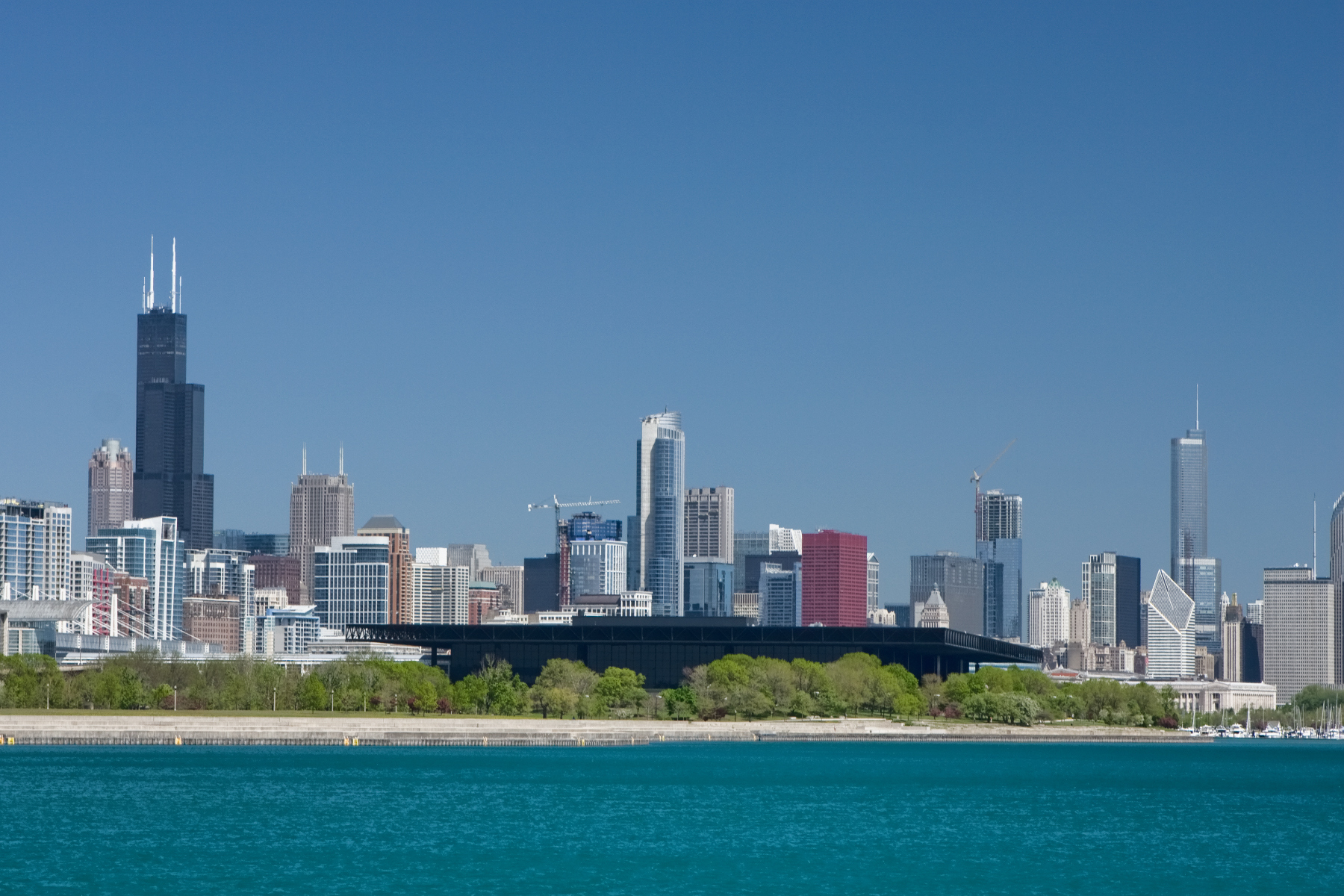The Metropolitan Pier and Exposition Authority plans to renovate Lakeside Center at McCormick Place in Chicago, offering potential to better protect birds at the four-level pavilion overlooking Lake Michigan, where nearly 1,000 migrating birds died after collisions in early October. Bird conservationists are hoping the mass fatalities will prompt action in Chicago and elsewhere to discourage birds from crashing into windows.
Better protecting migratory birds is "one factor in planning,” for the renovation of the C.F. Murphy-designed building, which opened in 1971, says Cynthia McCafferty, a spokesperson for MPEA.
The authority issued a request for information for the renovation late last year, but McCafferty would not comment on how much interest was received. She also says there is no timeline for sending out the project's request for proposals.
MPEA is already trying to better protect migrating birds including participating in Lights Out Chicago, a program that encourages owners and operators of large buildings to switch off or dim their lights from 11 p.m. until dawn. McCafferty says being part of Lights Out has reduced bird collisions on the McCormick Place campus by 80%.
The recent mass casualty of migrating birds has rekindled the longstanding issue of birds colliding with building facades. A 2014 study by the Smithsonian Conservation Biology Institute and the U.S. Fish and Wildlife Service found that between 365 million and 988 million birds are killed every year in the U.S. alone.

Most of the bird kills are on the east and north sides of Lakeside Center, completed in 1971.
Photo by Daryl Coldron, courtesy of the Field Museum
Bird conservationists say a Lakeside Center renovation would be a good time to increase bird safety. The exhibit hall hosts about 250 shows each year.
About 90% of the kills at Lakeside Center happen on the east side and north sides, says Douglas Stotz, a senior conservation ecologist with Chicago's Field Museum, which has monitored bird migration and building-strike deaths in the city for four decades.
When lights are glowing from inside a building’s mostly glass curtain, birds get confused and think they can fly through it. “It seems clear that the birds dying at McCormick are birds flying in off the lake, where they have strayed during their migration at night,” he says. “This means that efforts to reduce the kill at McCormick should be focused on those sides of the building."
Stotz recommends reducing the amount of window area, the use of bird-friendly glass and the provision of a mechanism for darkening the windows at night.
“McCormick is different because the lights at issue are internal lights that are on when there is a show going on or during the preparation for the show, and work is often occurring at night,” he says. “They are reluctant to not have those lights on at those times.”
Closed curtains could have helped, Stotz says. “Management at McCormick have told us that whether or not to close the curtains is a decision for the client, and clients often prefer to have curtains open,” he says. “Closing the curtains is a major undertaking, and so either the curtains are open for the entirety of the show, or closed for the entirety of the show.”
Mechanized shades are needed, says Annette Prince, director of Chicago Bird Kills, which tracks fatalities. “They need to replace the cumbersome drapes that they complain are too much trouble to draw and that need forklifts to pull shut." The shades would be an investment that could save hundreds or thousands of birds’ lives, she adds.
Prince cites the Studio Gang-designed Aqua high-rise, completed in 2013, as a building designed with bird safety in mind. The 82-story Chicago tower has undulating terraces and glass with a fritted pattern that break window reflections so confusing to birds.
Founder Jeanne Gang has long maintained that bird-friendly architects are frustrated by a lack of bird-friendly glass products.
Another bird-friendly project is St. Mary's Medical Center in Duluth, Minn., which also was designed so its skin has a visible fritted pattern that birds can see from farther away.
Stotz says there was less awareness of protecting migrating birds in the early 1970s when Lakeside Center opened, and replacing glass with a fritted pattern is not required in Chicago, either in new or existing construction. “Buildings tend not to use the patterned glass because of cost unless there are ordinances in place to require it,” he says.
In 2020, the city council passed a bill to have Chicago's Planning Dept. develop a set of policies that would include bird-friendly practices for new construction, says Stotz. "Those policies have not been released, but from what I understand the draft versions are not adequate to deal with the problem in new construction.”
Chicago’s Planning Dept. did not respond to questions about the status of any policies to better protect migrating birds in either new or existing construction.
Since 2020, Wisconsin has required all buildings greater than 10,000 sq ft to incorporate bird-safe design. Starting in 2015, Populous, which designed Fiserv Forum, home of the Milwaukee Bucks, worked with Bird City, a bird conservation group, to design a bird-friendly arena.
"When glass or glass-like materials are integrated into venue design, it’s important to balance insulation and reflectivity to create ideal environments — both inside and out, for people and wildlife," says Heather Stewart, a Populous principal. "Areas of concern are glazed corners which create fly-through conditions and increasing glazing visibility in low planted zones or planted roofs."
The arena design, which was revised in very small ways that were easy to incorporate, ensured that all four sides of the building were not threatening or invisible to birds, she says.
Some suggestions for better protecting birds are “to use less glass and place glass at angles rather than perpendicular to the ground,” says Stotz.
He also recommends finding an ornithologist or conservationist to act as an advisor to develop strategies for reducing threats to birds at specific buildings.





